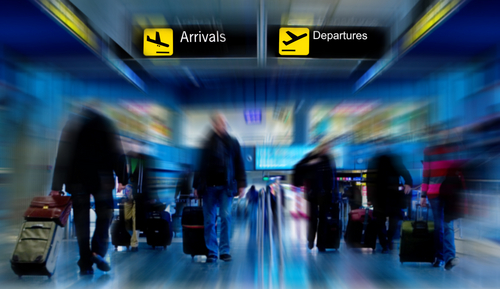
Muscat: A dip in oil prices is forcing Omanis to put off their international travel plans, according to travel agents in Oman.
While a travel agent says the industry is experiencing a decline of 8 to 10 per cent in international travel bookings and enquiries, another said that the drop is expected to range from 10 to 15 per cent.
Get your essential daily briefing delivered direct to your email inbox with our e-newsletter
“Compared to previous years, we have seen a slight dip on the enquiry front. Probably, it is early to comment on this and we may see improvements in coming days,” Santhosh Kanakandath, managing director at Assaraya Travel and Tourism, told Times of Oman.
According to Santhosh, who has been a travel agent in Oman for the last 30 years, the economic downturn has forced Omanis to seek out less expensive travel destinations.
“People are looking for cheaper destinations, mainly towards East European destinations, which currently offer excellent prices,” Santhosh said, while adding that Omani tourism companies, like others in the Gulf Cooperation Council (GCC) countries, are witnessing a slowdown in domestic tourism, as well.
“Mainly, Omanis opt for Far East countries and Central European destinations. East European countries are also fast catching up, with Georgia, Czech Republic and Slovakia being the prime locations,” Santhosh said.
Meanwhile, Raji Demonte, general manager at Universal Travel and Tourism Oman, said there has been a drop of 10 to 15 per cent in bookings and enquiries in international tourism.
“However, it is not that big, because Omanis still prefer to travel outside for honeymoons. Outbound travel for honeymoons has not fallen, even during this tough time. This may be the reason that the dip is not that high,” Raji added.
According to latest statistics, Oman saw an increase in international visits between 2005 and 2014, from over 2.49 million to 4.72 million visitors, however, the report adds that while an outbound tourist spent, on average, OMR115.4 in 2005, the amount declined to OMR87.7 by 2014.
International travel from the Middle East, according to United Nations World Tourism Organization’s (UNWTO) 2015 Tourism Highlights, numbered approximately 37 million people for 2014 and accounted for 3.3 per cent of the global outbound market.
A study conducted by Frost and Sullivan and Insights Middle East for Amadeus in 2014, estimated the total value of outbound travellers from the GCC at $64 billion.
Meanwhile, the World Travel and Tourism Council (WTTC) said, in its latest report, that Oman is the fastest growing tourism destination in the Middle East when it comes to the total contribution of the travel and tourism sector to its Gross Domestic Product (GDP).
While the total contribution of the sector was 5.7 per cent of Oman’s total GDP, at OMR 1,593.8 million in 2015, this is expected to grow by 6 per cent in 2016.
At an expected growth rate of 6 per cent, Oman stands at the top, while Qatar and Kuwait follow with 5.9 and 5.6 per cent of expected growth, respectively. Additionally, the United Arab Emirates (UAE) comes in at sixth place, with an expected growth rate of 4.4 per cent.